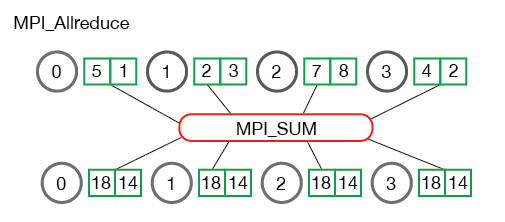
- #HOW TO INSTALL MPI FOR MAC OSX INSTALL#
- #HOW TO INSTALL MPI FOR MAC OSX UPDATE#
- #HOW TO INSTALL MPI FOR MAC OSX FULL#
With my version of oneAPI, the openmpi compilation was successful but later library errors emerged when compiling other code using mpif90. configure -prefix=/usr/local/openmpi-4.1.1 CC=icc CXX=icpc FC=ifort F77=ifort FCFLAGS='-O1' CFLAGS='-O1' CXXFLAGS='-O1'īe patient… it can easily take 20 minutes. To enable parallelism, I downloaded the latest source code of openmpi (4.1.1).
#HOW TO INSTALL MPI FOR MAC OSX INSTALL#
The install is easy and needs just one addition to your. The Mac version now comes with scalapack, which is a welcome bonus. There are two parts to install: the base toolkit includes MKL and the HPC Toolkit includes the compilers. They now come free as part of the oneAPI suite, which avoids the clunky licensing protocols of times past. It is possible to survive using gnu compilers and math libraries, but Intel C, Fortran and MKL tend to be faster and better tested (easier to compile). Two commands are required to initialise conda properly after installation: source /opt/anaconda3/bin/activate This comes with all of the basic packages including jupyter-lab. Python package and environment maintenance can cause headaches, so I now use conda (Python 3) as standard. For video and image editing, ffmpeg and imagemagick are essential. My base applications include: (standard office) Box, Slack, MS Office ( Imperial link), Mactex, Texmaker, Zotero (scientific computing) latest gcc/gfortran, iTerm, Textmate, XQuartz, Atom, Cyberduck, GitHub client (materials modelling) VESTA, Avogadro. Sudo ln -s /Library/Developer/CommandLineTools/SDKs/MacOSX.sdk/usr/include/* /usr/local/include/ Later you may need C libraries that are in a non-standard location, so I find it useful to create the following link: sudo mkdir /usr/local/include zprofile has some basic settings such as: alias ls='ls -G -ltr'Īlias cpu='echo time $(uptime) & echo $(sysctl -n hw.ncpu) cores on $(hostname)' Set up your zprofile, ssh config, and vimrc files to make working faster and more comfortable.

I used to open Terminal and type make which triggers the system to install the command line tools module (basic UNIX commands including a gcc compiler), but you end up missing some essential components.
#HOW TO INSTALL MPI FOR MAC OSX FULL#
Go to System Preferences Security & Privacy Privacy Developer Tools and add Terminal to the apps that can run software locally.Ī full Xcode install from the App Store is recommended. The first step is to give Terminal some power.

This is a refresh of previous posts covering a clean install of macOS 11.2.1 (Big Sur) on an iMac Pro in April 2021.
#HOW TO INSTALL MPI FOR MAC OSX UPDATE#
Will this be my final update for Intel Macs? Given the initial performance reports of Apple silicon, I hope so.


 0 kommentar(er)
0 kommentar(er)
